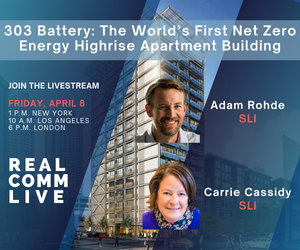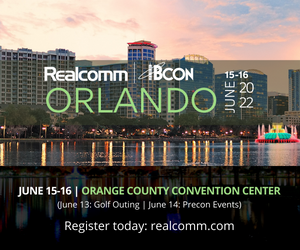Environmental. Social. Governance.

These three words combine to form a powerful concept that is pulsating throughout the built environment. So, how have we arrived here?
The year 2020 was the year we saw the lifeblood of environmental, social and governance (ESG) go mainstream in the built environment. 2021 could be classified as the year in which organizations began to earnestly explore the implications of the transition towards ESG and to consider how to achieve sustainable outcomes and impact.
Significant Focus on Sustainability & Net Zero Initiatives
Today, we are witnessing that the developments of the past few years have set the stage for a significant focus in ESG sustainability initiatives.
We have seen several organizations announce climate pledges to become net-zero by reducing their carbon footprint and making ESG commitments. Real estate, corporate facilities, and sustainability directors are now on the front lines for operationalizing these ambitions and driving action at the building level.
ESG is playing an influential role across all businesses globally, including the built environment. These initiatives are resulting in C-Level involvement and re-engagement in energy management, carbon reduction, net-zero targets, water conversation, and more for their building portfolios.
Adopting ESG principles has become more pressing today with many building owners and operators making it a priority to invest in this effort. This acceleration has been driven by the heightened attention within the C-Suite on the broader impact ESG has on companies. Investors and executives realize that a strong ESG proposition can safeguard a companyís long-term success, enhance its social influence and public relations, and help protect it from external pressures.
Which factor(s) do you believe have the most significant long-term impact to ensure success:
- Culture
- Commitment
- Accountability
- Transparency
- Metrics/Reporting
- Standards
- Directives
Global Impact of Our Carbon Footprint
As we forge ahead, it is clearer than ever that the global impact of carbon emissions attributed to the commercial building industry needs to be treated with both urgency and attention.
With buildings responsible for 28% of all annual carbon emissions, we are now in a critical position in which the decisions we make for our buildings could ultimately lead to two outcomes: either the industry makes major changes that will aid the planet, or we make the problem worse, bringing an already dire crisis closer to the point of no return.
ESG is not an endpoint, but a continual pursuit to make our buildings smarter and more responsible. Adoption of smart building technology is at a pivotal point driven by connectivity, data, edge, cloud, and the convergence of operational and workplace outcomes.
The industry is currently being influenced by several forces which are creating this change in course. The influence of flexible workplaces and demand for IAQ, the increasing number of connected devices and systems, cyber threats, and the global drive toward net-zero, all depend upon connected and smarter buildings. In addition, this is encapsulated by the ESG movement where organizations are being compelled to be more conscious and demonstrate how they are addressing environmental impact and social factors.
Optimal Energy Management and Efficiency
Without a doubt, commercial real estate is now going green. Sustainable buildings are becoming more mainstream. With rising energy costs, the importance of maximizing the efficiency of equipment and energy management systems has become even more critical both economically and environmentally.
- 70% of the world population will live in cities by 2050.
- Commercial buildings account for 36% of all U.S. electricity consumption.
- HVAC equipment equates to 40%-60% of a building's total energy consumption.
- Buildings are currently responsible for more than 40% of global energy use.
- Energy management capabilities and data analytics serves as a comprehensive tool that helps facility owners and operators to better manage energy metering, identify trends, resolve potential energy inefficiencies, reduce overall operating costs, and carbon footprint, all while increasing employee or occupant health and safety.
While adopting ESG principles and creating outcomes have become important, implementing a successful ESG program is one of the most complex challenges we are dealing with in our quest to make buildings smarter.
This Week’s Sponsor
Embracing open software/hardware platforms, Lynxspring develops, manufactures, and distributes edge-to-enterprise solutions creating smarter, sustainable buildings, better energy management systems, equipment control and specialty machine-to-machine and IoT applications. Lynxspring technologies simplify connectivity, integration, interoperability, data access and normalization and analytics from the edge to the enterprise. The companyís solutions are commercially deployed in millions of square feet in the United States and internationally.
Read Next
 3/27/2025
3/27/2025
The Convergence of Edge Computing, Cloud, and AI in Building Automation and Smart Buildings In the built environment, we have seen the convergence of Operational Technology (OT) and Information Technology (IT), later expanding to include Workplace Technologies (WP).
 3/27/2025
3/27/2025
DC Power: A Holistic Approach to Energy Savings in Commercial Buildings In today's energy-conscious world, businesses constantly seek ways to reduce their carbon footprint and operational costs.
 3/13/2025
3/13/2025
How to Achieve Eco-Friendly Facility Management Commercial real estate operators and facility managers are focusing on sustainable practices to minimize environmental impact, create healthier workplaces, improve productivity and lower operational costs.
 1/23/2025
1/23/2025
When It Comes To Managing Propertiesí Parking, Technology Is Key Itís easy for developers and real estate owners to think of parking as a necessary evil. They know they have to provide it (often, because itís mandated by code), they understand that prospective tenants and buyers expect to be provided parking, but they havenít figured out how to maximize its value.








.gif)




